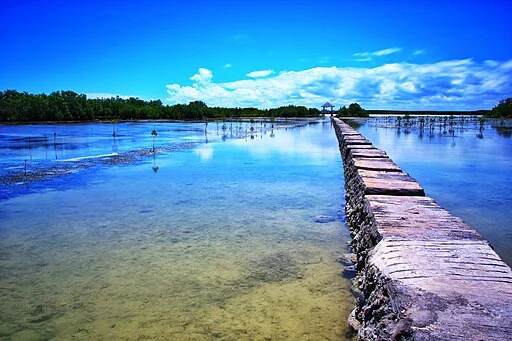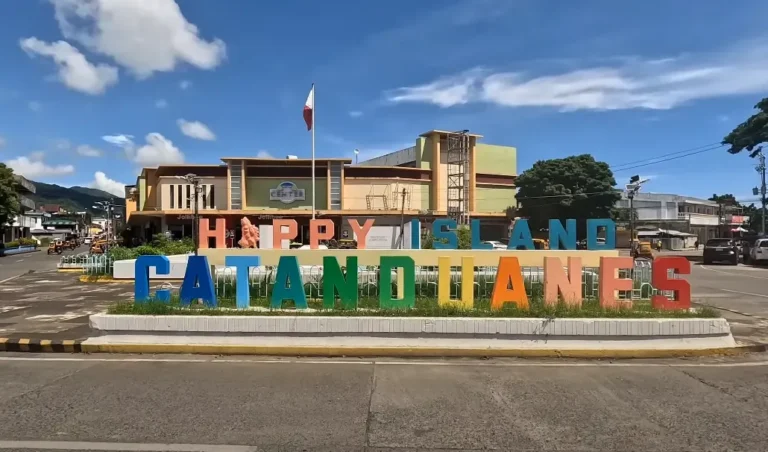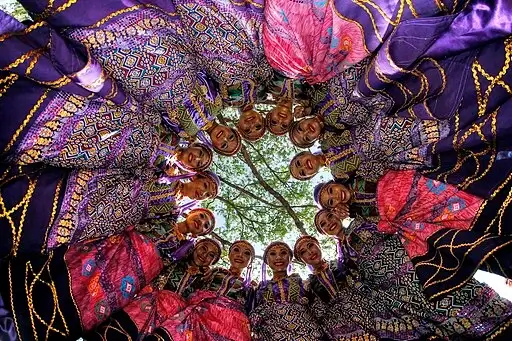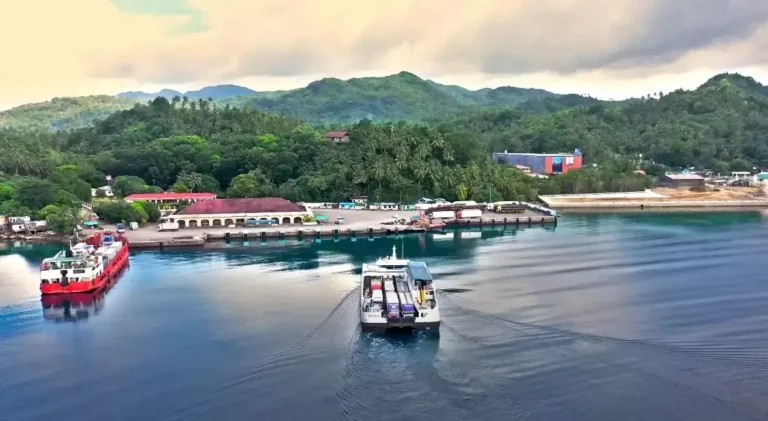T’Nalak Festival Philippines
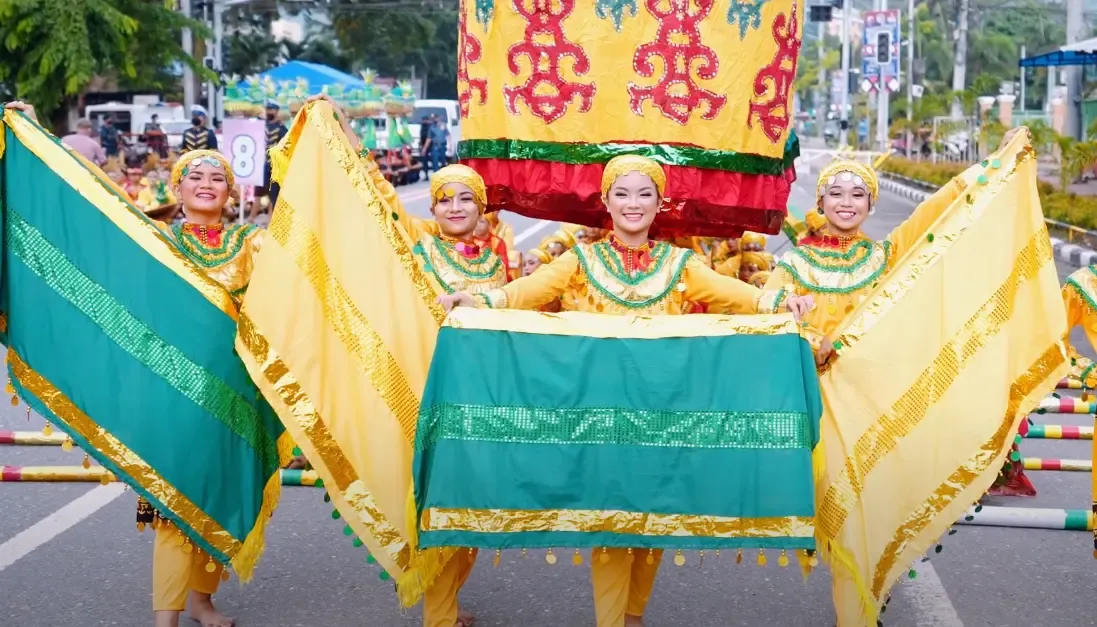
Welcome to the vibrant and culturally rich world of the T’Nalak Festival in the Philippines! This extraordinary celebration showcases the indigenous traditions and remarkable heritage of the T’boli people, an indigenous group residing in the beautiful province of South Cotabato.
The T’Nalak Festival, named after the renowned T’nalak cloth, weaves together a tapestry of captivating rituals, mesmerizing performances, and awe-inspiring artistry that will leave you breathless.
Join us as we discuss the heartwarming stories behind this remarkable festival and explore the vibrant colors, intricate patterns, and profound symbolism that make the T’Nalak Festival a truly unforgettable cultural experience.
Embark on a journey of discovery as we unravel the magic and allure of this cherished Philippine celebration.
Key Takeaways
- T’Nalak Festival is a celebration of the cultural heritage of South Cotabato and the founding of the province.
- The festival showcases the traditional craftsmanship of the Tboli people, particularly the weaving of T’Nalak fabric.
- Lang Dulay, a National Living Treasurer, is recognized for her contribution to preserving Tboli traditional craftsmanship and continues to create T’Nalak tapestries using traditional methods.
- The festival offers a variety of activities such as trade expos, musical concerts, competitions, and a grand parade, highlighting the rich culture and traditions of the region.
Facts About The T’Nalak Festival Philippines
| Facts | Explanation |
|---|---|
| Name of the Festival | T’Nalak Festival Philippines |
| Type of Festival | Cultural Festival |
| City of Origin | Koronadal City |
| Festival Etymology | T’Nalak is a traditional woven cloth of the T’boli people, who are indigenous to the region. The festival celebrates the vibrant culture and heritage of the T’boli community. |
| Date Celebrated First | July 18, 1999 |
| Founder of the Festival | City Government of Koronadal |
| Festival History | The T’Nalak Festival was first celebrated in 1999 to showcase and preserve the rich cultural heritage of the T’boli people. The festival has since become an annual event, attracting locals and tourists alike. It features various activities such as street dancing, beauty pageants, traditional crafts exhibits, and culinary showcases. Through the festival, the T’boli people aim to promote their traditions, arts, and crafts, fostering a deeper understanding and appreciation of their cultural identity. |
| City History | Koronadal City, also known as Marbel, is the capital city of South Cotabato province in the Philippines. It was once a simple settlement until it gained cityhood in 2000. Today, it serves as the regional administrative center and a hub for trade and commerce in the region. The city has experienced significant growth and development over the years, attracting both local and foreign investments. It is known for its friendly atmosphere, beautiful landscapes, and vibrant cultural heritage. |
| Ethnic Information | The T’boli people are the main ethnic group associated with the T’Nalak Festival. They are indigenous to South Cotabato and are known for their intricate weaving skills, unique musical instruments, and colorful costumes. Their cultural practices and beliefs are deeply rooted in their connection to nature and ancestral traditions. |
| Location in Country | Koronadal City is located in the province of South Cotabato on the island of Mindanao in the southern part of the Philippines. |
| How to Reach the City | By Air: The nearest airport to Koronadal City is General Santos International Airport (approximately 1 hour away by land transportation). By Land: Buses and vans from major cities in Mindanao have routes going to Koronadal City. By Sea: There are no direct sea routes to Koronadal City as it is inland. |
| Nearby Cities or Towns | 1. General Santos City – 51 km 2. Davao City – 138 km 3. Cotabato City – 179 km 4. Kidapawan City – 49 km 5. Lake Sebu – 29 km |
| Google Map Link | Koronadal City Location |
| Festival Main Events | 1. Street Dancing Parade 2. Traditional Crafts Exhibits 3. Beauty Pageants 4. Culinary Showcases 5. Cultural Performances 6. Drum and Lyre Competition 7. Float Parade 8. Agro-industrial Fair |
| Other Famous Tourist Attractions | 1. Lake Sebu – Known for its scenic lake surrounded by lush mountains and waterfalls. 2. Seven Falls – A series of majestic waterfalls that offer breathtaking views and adventure activities. 3. Baras Bird Sanctuary – A haven for birdwatchers, with various bird species thriving in the area. 4. Mount Matutum – A dormant volcano perfect for hiking and nature exploration. 5. Sultan Kudarat Monument – A historical landmark commemorating Sultan Kudarat’s resistance against Spanish colonization. |
| Famous Food Dishes | 1. Inihaw na Bangus (Grilled Milkfish) – A popular local dish made from fresh milkfish marinated in a special sauce and grilled to perfection. 2. Tilapia Ice Cream – An interesting dessert made from freshwater tilapia fish blended with fruits and cream. 3. Sinina (T’boli Soup) – A traditional T’boli soup made with fish or chicken, mixed with vegetables and spices. 4. Lamlaw (T’boli Salad) – A refreshing salad made with native vegetables, herbs, and fruits from the region. |
| Landmarks | 1. Provincial Capitol Building – The seat of government in South Cotabato province. 2. Koronadal City Hall – The main administrative center of Koronadal City. 3. Paraiso Verde Resort and Water Park – A popular leisure destination with pools, slides, and other recreational facilities. 4. The Farm at Carpenter Hill – A relaxing retreat offering farm-to-table dining experiences and scenic views of the surrounding countryside. |
| Related Festivals | 1. Kadayawan Festival (Davao City) 2. Kalilangan Festival (General Santos City) 3. Shariff Kabunsuan Festival (Cotabato City) 4. Helobung Festival (Lake Sebu) |
T’Nalak Festival Origins
You’ll discover that each piece of the T’Nalak Festival’s vibrant tapestry has its origins in the rich cultural soil of the Tboli people of South Cotabato. This celebration is deeply rooted in the traditions and rituals that define the Tboli heritage.
The festival is not just about colorful parades and lively music; it’s a living exhibition of the T’nalak weaving techniques, a skill passed down through generations. Tboli women, revered as custodians of this art, meticulously tie and dye abaca fibers to create the iconic T’nalak fabric.
These textiles are more than just materials; they’re woven with stories and dreams, integral to Tboli traditional rituals. As you delve into the festival’s origins, you’re not just learning about a craft, but embracing a sacred legacy.
The Sacred T’Nalak Cloth
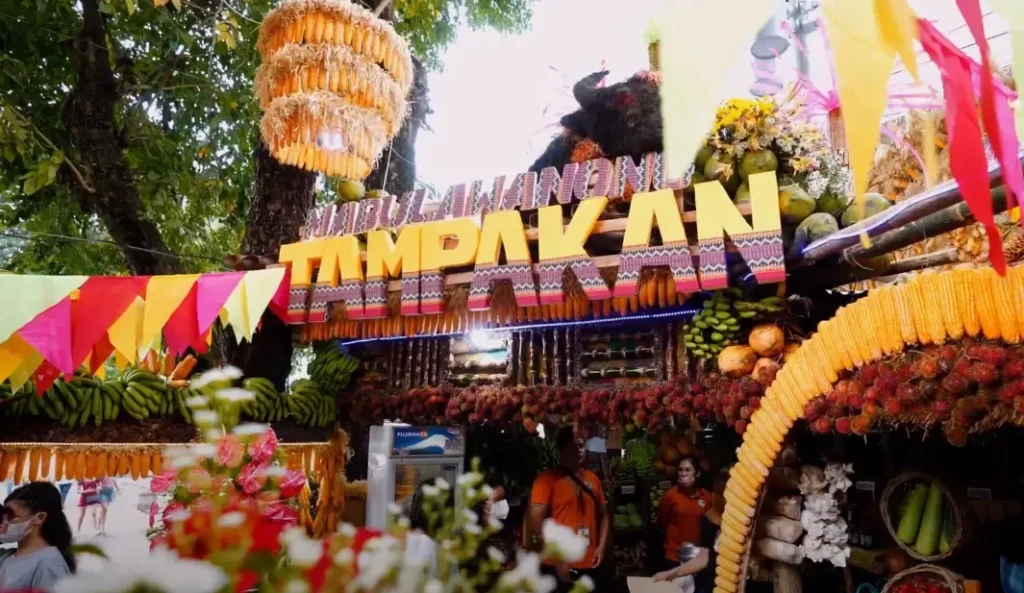
Why is the T’nalak cloth so revered? It’s not just a piece of fabric; it’s a symbol of the Tboli people’s identity and culture. The T’nalak fabric symbolism is deeply rooted in Tboli traditions, with patterns often inspired by dreams and the natural world around them.
You’d be amazed at how the traditional T’nalak weaving techniques have been passed down through generations. It’s a meticulous process that involves transforming abaca fibers into stunning visual narratives. Each strand is dyed, tied, and woven by hand, reflecting not just artistic skill but also a spiritual connection to their ancestors.
This sacred cloth embodies the harmony between the weavers’ dreams and their tangible expression, making it a treasured element of the T’nalak Festival.
Lang Dulay’s Legacy
Lang Dulay’s Legacy refers to the lasting impact and contributions of Lang Dulay, a renowned Philippine textile weaver. Lang Dulay, also known as “The Dreamweaver,” hailed from the T’boli indigenous group in Lake Sebu, South Cotabato, Philippines.
Lang Dulay’s expertise in weaving intricate T’boli designs using abaca fibers earned her recognition both locally and internationally. She dedicated her life to preserving and promoting the traditional T’boli weaving techniques, which have been passed down through generations.
Her extraordinary talent and dedication to her craft brought global attention to the indigenous artistry of the T’boli community. She was awarded the National Living Treasure Award by the Philippine government in 1998, recognizing her significant contributions to Philippine culture.
Lang Dulay’s legacy extends beyond her exceptional weaving skills. She played a crucial role in the revitalization of T’boli culture and identity. Through her work, she helped preserve the rich cultural heritage of her community and inspire younger generations to continue the tradition.
Sadly, Lang Dulay passed away in 2015 at the age of 91. However, her legacy lives on through the intricate tapestries and vibrant textiles she created. Her influence on the world of Philippine weaving continues to be celebrated and remembered, ensuring that her contributions will be cherished for generations to come.
T’Nalak Festival Inaugural Festival Celebrations
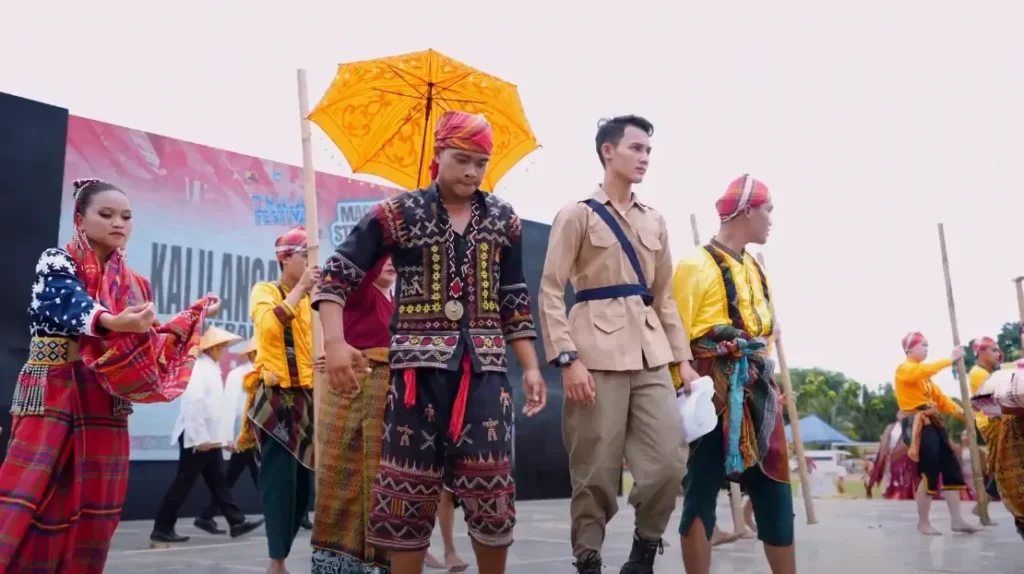
During the festival, you can witness colorful street parades where participants wear traditional T’boli attire adorned with T’nalak fabric. These parades showcase traditional dances, music, and performances that depict the T’boli’s daily activities, legends, and rituals.
One of the main highlights of the festival is the T’nalak Grand Parade, where different contingents from different municipalities in South Cotabato compete to showcase their creativity and cultural pride. Each contingent presents its interpretation of T’boli traditions through choreographed dances and elaborate costumes.
Another significant event during the T’Nalak Festival is the “Lagbasan Dalan,” which translates to “Street Dancing.” It is a street dance competition where participants dance to the beat of traditional instruments while wearing colorful costumes. The dance routines often depict stories from T’boli folklore and mythology.
Aside from the cultural showcases, the festival also includes various competitions such as traditional sports, beauty pageants, and culinary contests. There are also exhibits and trade fairs where visitors can purchase T’nalak fabric, handicrafts, and local products.
The T’Nalak Festival is not only a celebration of the T’boli culture but also an opportunity to promote tourism in South Cotabato. It attracts both local and foreign tourists who are interested in experiencing the unique traditions and vibrant culture of the T’boli people.
Overall, the T’Nalak Festival is a vibrant and colourful celebration that brings together the community to honour and preserve the cultural heritage of the T’boli people. It serves as a reminder of the importance of embracing and appreciating indigenous cultures in the Philippines.
T’Nalak Festival Highlights
The T’Nalak Festival is a vibrant celebration held in South Cotabato, Philippines. Here are some highlights of this colourful event:
- Traditional Cultural Performances: Experience the rich cultural heritage of the T’boli people through traditional dances, music, and performances. The T’boli are known for their intricate beadwork, weaving, and distinctive costumes, which are showcased during the festival.
- Street Dancing Competition: Watch as different groups compete in a lively street dancing competition, where participants don vibrant T’boli-inspired costumes and perform synchronized dance routines. The colourful spectacle is a feast for the eyes and a celebration of local traditions.
- Float Parade: Marvel at the intricately designed floats adorned with vibrant T’boli motifs and symbols. Each float tells a story and represents the creativity and artistry of the T’boli community.
- Cultural Exhibitions: Explore exhibitions that showcase the T’boli culture and artistry. You can learn about traditional crafts, such as weaving and beadwork, and even try your hand at creating your T’boli-inspired crafts.
- Agri-Trade Fair: Discover the agricultural products and handicrafts of South Cotabato at the agri-trade fair. It’s a great opportunity to support local farmers and artisans while enjoying the festivities.
- Beauty Pageant: Witness the crowning of the Mutya ng South Cotabato, where young women from different municipalities compete for the title. This pageant showcases not only beauty but also intelligence and grace.
- Food Festivals: Indulge in a variety of local delicacies and traditional T’boli dishes during the food festivals held throughout the festival. From authentic T’boli cuisine to fusion dishes, there’s something to satisfy every palate.
- Traditional Games and Sports: Take part in or watch traditional T’boli games and sports competitions, such as horse racing, tug-of-war, and archery. These activities give you a glimpse into the traditional pastimes of the T’boli community.
Location Of Koronadal City
Koronadal City is located in the province of South Cotabato, which is situated in the southern part of the Philippines. It is approximately 60 kilometers south of General Santos City and about 410 kilometers south of Davao City.
Cultural Performances
During the T’Nalak Festival, you’ll experience a rich array of cultural performances that showcase the unique traditions and talents of the Tboli people. From traditional music and dances to indigenous rituals and ceremonies, each display is a vibrant thread in the fabric of Tboli culture.
| Performance Type | Description |
|---|---|
| Traditional Music | Melodies from native instruments like the hegelung |
| Traditional Dances | Interpretive movements telling Tboli tales |
| Indigenous Rituals | Ceremonies reflecting spiritual beliefs |
Famous Tourist Spots in Koronadal City, South Cotabato
- Baras Bird Sanctuary: This bird sanctuary is home to a variety of bird species and offers an opportunity for bird-watching and nature enthusiasts.
- Lake Sebu: Located just a short distance from Koronadal City, Lake Sebu is a popular tourist destination known for its scenic beauty. Visitors can enjoy boat rides, visit the Seven Falls, and experience the rich culture of the T’boli people.
- Sultan Kudarat Monument and Park: This historical landmark commemorates Sultan Muhammad Dipatuan Kudarat, a revered Muslim leader who fought against Spanish colonization. The park surrounding the monument is a peaceful spot for relaxation and reflection.
- Provincial Capitol Complex: The Provincial Capitol Complex is a government centre that showcases modern architecture and beautifully landscaped gardens. It is worth a visit for its aesthetic appeal and to learn about the local government.
- Mindanao State University Museum: Located within the Mindanao State University campus, this museum showcases artifacts, artworks, and cultural exhibits that provide insights into the rich heritage of the region.
- South Cotabato Sports Complex: If you are interested in sports or want to witness local sporting events, the South Cotabato Sports Complex is the place to go. It has various sports facilities and hosts games and tournaments.
- B’laan Tribal Village: For a unique cultural experience, visit the B’laan Tribal Village. Here, you can interact with the indigenous B’laan people, learn about their traditions, and purchase traditional crafts.
- Provincial Capitol Building: The Provincial Capitol Building is an iconic landmark of Koronadal City. Its architecture reflects the fusion of modern and traditional design elements, making it a notable site for photography and sightseeing.
- Marbel Food Park: If you’re looking for a dining experience, head to Marbel Food Park. This food park offers a wide selection of local cuisine and is a popular spot for food lovers to unwind and enjoy delicious meals.
These are just some of the famous tourist places in Koronadal City. There are many more attractions and activities to explore in this vibrant city.
T’Nalak’s Impact on Tourism
As you explore the T’Nalak Festival, you’ll witness its significant contribution to boosting tourism in South Cotabato. The vibrant displays of Tboli culture showcased through the iconic handwoven fabric, attract visitors from around the globe.
T’nalak’s economic benefits are visible as tourists flock to the region, eager to experience its unique heritage and purchase authentic artisanal goods. This influx of visitors not only supports local businesses but also stimulates broader interest in South Cotabato’s natural beauty and other cultural attractions.
Moreover, T’nalak’s role in preserving indigenous culture is invaluable. The festival serves as a dynamic platform for the Tboli people to celebrate and share their traditions, ensuring that their way of life continues to thrive and enchant both locals and tourists alike.
Interesting Facts About The T’nalak Festival
- 🌈 T’nalak’s Origin: The T’nalak Festival takes its name from the traditional woven cloth of the T’boli people, known as “t’nalak.” This fabric is made from abaca fibers and is considered a sacred textile in their culture.
- 🥁 Indigenous Showcase: The festival is not just about lively street parades; it also features a cultural showcase highlighting the rich traditions of various indigenous groups in Mindanao, fostering a deeper understanding of their heritage.
- 🎨 Living Art: T’nalak Festival goes beyond conventional art forms. Artists create live paintings during the event, capturing the vibrant energy and essence of the festival in their works.
- 🏆 Loom Weaving Contest: In addition to the grand street dancing competitions, there’s a unique contest for traditional loom weavers. Skilled artisans showcase their weaving prowess, adding a layer of cultural appreciation to the festivities.
- 🍲 Culinary Delights: One surprising aspect is the focus on indigenous cuisine. T’nalak Festival celebrates not just visual and performing arts but also the diverse flavours of Mindanao, introducing festival-goers to traditional and exotic dishes.
- 🚲 Eco-Friendly Parade: To promote environmental consciousness, the festival incorporates eco-friendly floats and decorations made from recycled materials in its grand parade, emphasizing sustainability and creativity.
- 🏹 Tribal Sports: Traditional games and sports native to the indigenous communities of Mindanao take centre stage during the festival. This includes archery competitions and other skill-based activities that showcase the athleticism of the locals.
- 🌱 Green Initiatives: The T’nalak Festival doesn’t only celebrate culture but also emphasizes environmental responsibility. The festival organizers actively promote tree planting and other green initiatives to contribute to the region’s ecological well-being.
- 🎭 Masked Performances: Alongside the colourful costumes, some performances feature masked dancers, adding an element of mystery and intrigue to the festivities. These masks often hold cultural significance and tell stories unique to the T’boli people.
- 🎶 Ethno-Rock Fusion: T’nalak Festival embraces diversity in music by hosting ethno-rock fusion bands. These performances blend modern and indigenous musical elements, creating a unique and exciting auditory experience for festival-goers.
Conclusion
The T’Nalak Festival in the Philippines celebrates the Tboli people’s rich cultural heritage, particularly their intricate weaving of the T’nalak fabric. The festival features street dancing parades, cultural performances, and exhibitions of traditional crafts.
The highlight is the T’nalak Grand Parade, where participants showcase their creativity and cultural pride. The festival also honors Lang Dulay, a renowned weaver, and promotes tourism in South Cotabato. It is a vibrant celebration of the Tboli community’s traditions and artistry, preserving their valuable legacy.
Frequently Asked Questions
- What is The T’Nalak Festival?
- The T’Nalak Festival is an annual cultural celebration held in South Cotabato, Philippines. It showcases the rich cultural heritage of the T’boli tribe, particularly their weaving tradition and the iconic T’nalak fabric.
- When is The T’Nalak Festival celebrated?
- The T’Nalak Festival is celebrated every July 18th to 20th in South Cotabato, specifically in the municipality of Lake Sebu. The festival spans three days and features various activities and events.
- What is the significance of the T’nalak fabric?
- The T’nalak fabric is a sacred cloth made by the T’boli tribe using traditional techniques passed down through generations. It is created from abaca fibres and natural dyes extracted from plants. The patterns on the T’nalak represent the dreams and visions of the weavers and are considered symbols of cultural identity and spiritual connection.
- What activities can I expect during The T’Nalak Festival?
- The T’Nalak Festival offers a vibrant lineup of events, including street dancing competitions, cultural performances, trade fairs showcasing local products, beauty pageants, art exhibits, and traditional sports competitions. Visitors can also witness live weaving demonstrations and immerse themselves in the T’boli culture.
- Can I purchase T’nalak fabric during The T’Nalak Festival?
- Yes, during The T’Nalak Festival, there are opportunities to purchase authentic T’nalak fabric directly from the weavers. Local artisans set up stalls where visitors can buy T’nalak products, including clothing, accessories, and home decor items. It’s a great way to support the traditional weaving industry and bring a piece of T’boli culture home.

